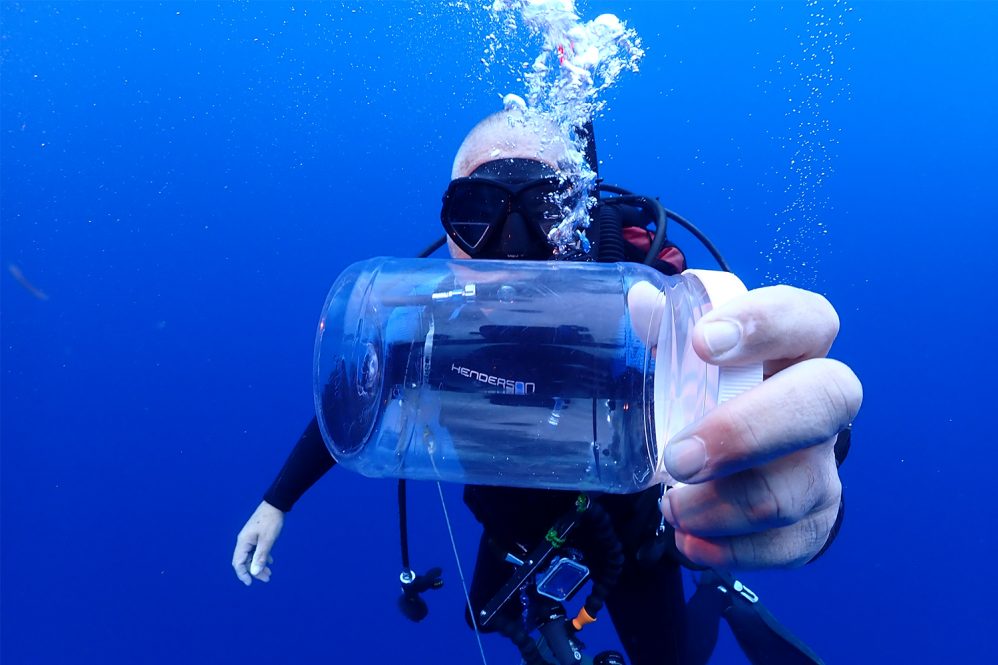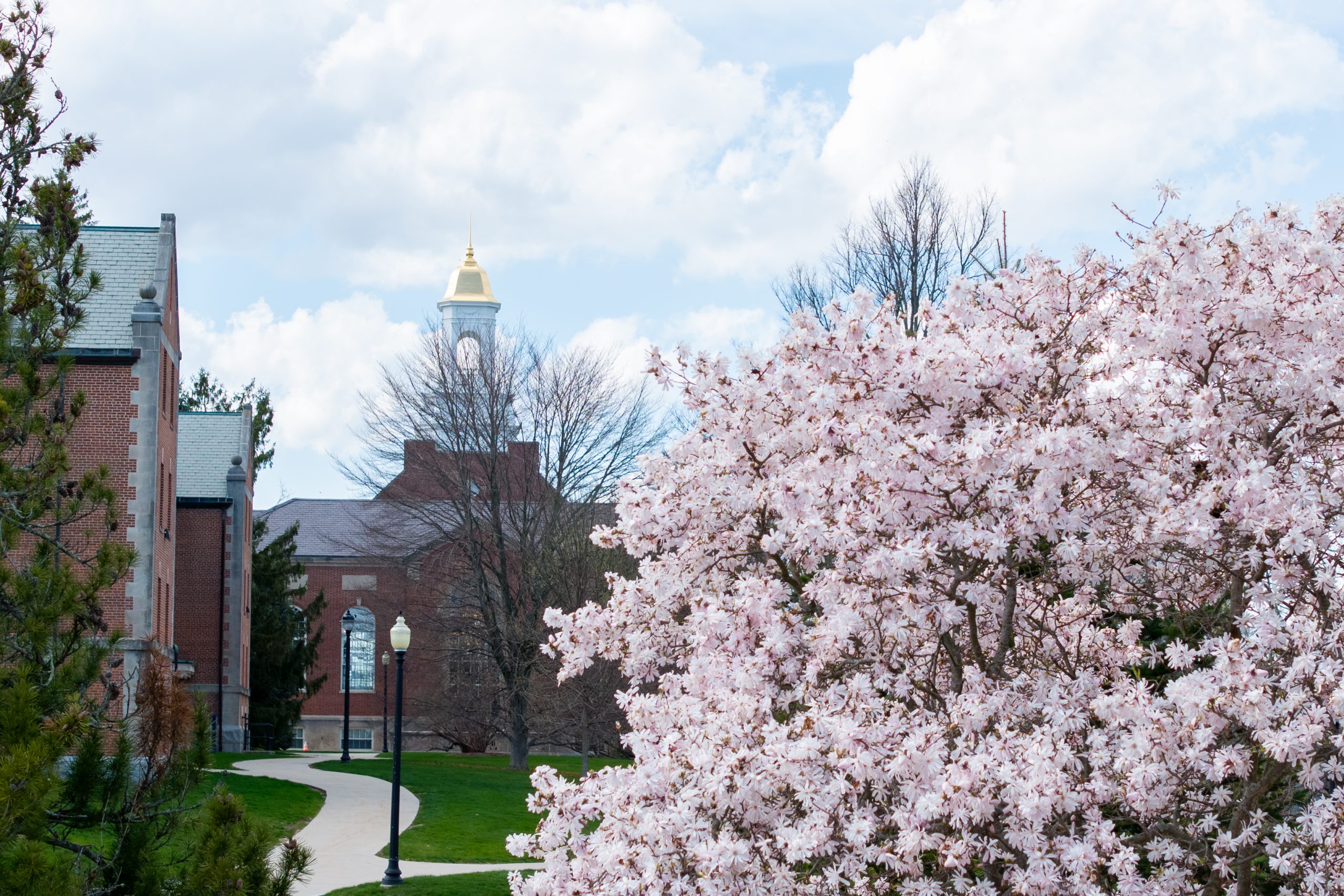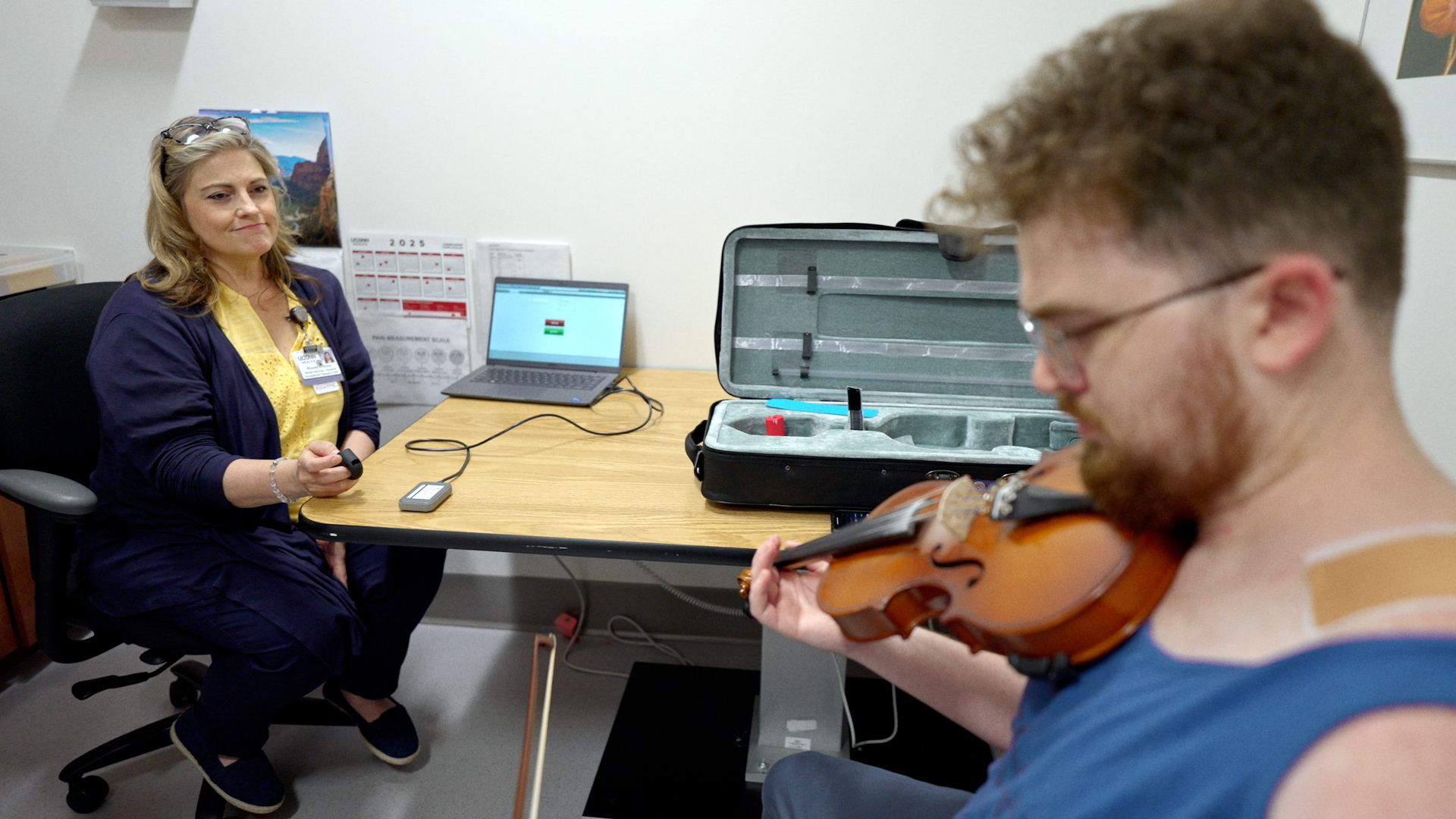In July, UConn’s research vessel Connecticut set off for the Northeast Canyons and Seamounts Marine National Monument on a unique expedition led by Peter Auster, Senior Research Scientist at Mystic Aquarium and Research Professor Emeritus in UConn’s Department of Marine Sciences. The expedition aimed to begin studying marine ecosystems in highly protected areas free from disruptive activities like fishing or mining. Though mechanical issues cut the ten-day expedition short, Auster says the progress they made in the time they had lays the groundwork for future expeditions and research studies.
“If you’re 180 miles offshore, you don’t want more things to go wrong,” he says. “Then right behind that, there was bad weather approaching, so we would have gotten blown out of the Monument anyway by high winds and seas.”
The Northeast Canyons and Seamounts Marine National Monument is the only marine monument in federal waters off the east coast of the continental United States. President Barack Obama designated the monument in 2016, and now, after a seven-year grace period for red crab and offshore lobster fishing, all commercial-scale finishing is prohibited, says Auster. The now fully protected area – note recreational fishing is still allowed – is roughly the size of Connecticut and gives researchers a glimpse into how marine species and ecosystems function in a less human-disrupted environment.
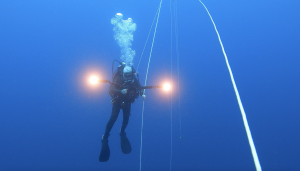
“It’s the only area along the entire Atlantic coast that is vertical-line-free all year long,” Auster says. “There is no fishing gear that can entangle whales and dolphins and seabirds and turtles throughout the year, so that makes it unique. Our expedition is one of the first to exclusively focus on the Monument. This begins the real focus on how communities of marine wildlife operate in the absence of significant direct human impacts.”
Auster explains that in the last few years weather patterns have changed, and there seems to be fewer long periods of calm for which to plan expeditions. Fortunately, at the furthest reaches of the seamount, about 180 miles out, Auster says the water was peaceful, which enabled the scientists to squeeze in as much research as they could in the day they had at their destination.
One of Auster’s colleagues from NOAA, and a graduate student from Western Connecticut State University, gathered environmental DNA, or eDNA to measure biological diversity in the monument and patterns of diversity across multiple depths. Another colleague from Yale sampled gelatinous zooplankton that migrate in the water column and have important ecological functions. This expedition was important, Auster says, because it creates the foundation for future work and the team is excited to return for future research cruises.
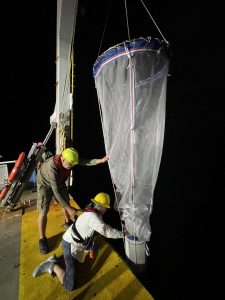
The calm conditions meant that Auster and and Diving Safety Officer Jeff Godfrey were able to do a blue water dive, where they collected gelatinous animals and performed a photo survey for small, mobile organisms that associate with the gelatinous animals and live in the upper water column. They also used baited remote video cameras with the hopes of seeing sharks and other big marine animals. Interestingly, however, the juvenile fish of at least five species used the cameras as habitat, says Auster, and gave them a sense of how many move in unison through open water seeking refuge.
“The blue water dive, just from an experiential perspective, was spectacular. We’re essentially weightless in a big blue open expanse, but filled with life. We use lines on a buoyed ‘trapeze’ to orient ourselves, with 25 m (85 ft) of water above us and 1800 m (5900 ft) to the seafloor below. While it seems like drifting in space, we encounter multiple species floating I the same medium, like the gelatinous animals in a Pre-Cambrian sea. I’ve done blue water dives elsewhere and it’s a similar experience, but this was in the Monument, a protected bit of ocean wilderness, so I took a second to savor the feeling, and then got back to work.”
There were also two scientists surveying seabirds, says Auster. While there has been work on marine mammals and seabirds along the canyons, there has been very little work offshore in the seamount area, so this survey was unique. They saw a wide range of seabirds, some that were expected and others that were likely transient and somewhat surprising.
“What are these birds doing there?” Auster says. “Whether they were blown offshore by storms, or they use that area to migrate that we just don’t know about, or they are they’re out there because they blew off of a ship that was transiting through the area. Knowing why they’re there remains to be seen, but is important from a conservation and management perspective.”
Though the data they collected was limited, Auster says it has already begun to yield additional questions waiting to be answered on subsequent expeditions.
“This helps us study things about the monument’s role and how the animal communities there function, and how do we ensure their conservation into the future,” he says. “I think that, for a short time[at the Monument], we learned a lot. I think everybody’s itching to go back.”
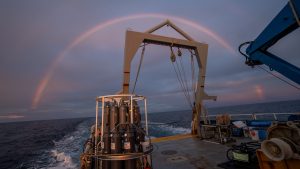
After the 33 hours it took to steam out to furthest seamount, the researchers worked for 24 hours because they knew their time was short, and steamed another 33 hours back to land. They did collect some types of data along the way, such as the seabird surveys and oceanographic data. “We were gone for four days to get a day’s worth of work in for most projects. I’ve had whole cruises wash out due to weather, so getting anything done is a treat.”
Auster says they already have funds for going back next summer, and that they’re eager to pick up where they left off.
“I’ve worked in some other places that are highly protected in the Pacific Ocean, like Cocos Island off Costa Rica and Galapagos, but this is the only one in the Atlantic, and being able to understand how the ocean works here in the absence of human disturbance is a unique opportunity.”
This research was funded by the U.S. Fish and Wildlife Service, Mystic Aquarium, and NOAA.
